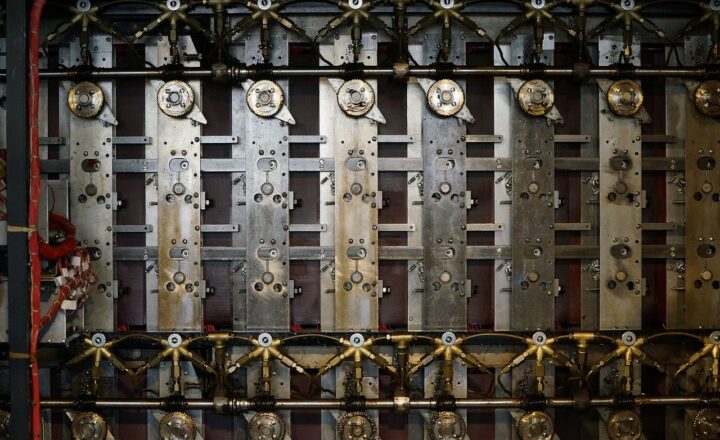How Spy Agencies Use Everyday Items as Concealed Weapons
November 11, 2024

In the world of espionage, the line between a common everyday object and a sophisticated weapon can often blur. Spy agencies around the globe have mastered the art of concealment, using seemingly innocuous items as deadly tools. From the classic tales of spies in trench coats and fedora hats to modern-day intelligence operations, the techniques employed to disguise weapons in everyday objects are both ingenious and alarming. This article delves into how spy agencies utilize common items as concealed weapons and the implications for security and public safety.
1. The Need for Concealment in Espionage
In an age where surveillance is ubiquitous, and security measures are tight, the need for stealth in espionage has never been more critical. Spy agencies require operatives to navigate hostile environments while remaining under the radar. This necessitates the use of concealed weapons that can easily blend into the background. A concealed weapon’s effectiveness often lies in its ability to go unnoticed until it’s needed.
Concerns over security threats have led to an increased scrutiny of personal belongings, making it imperative for spies to think creatively about the tools they carry. The creativity involved in weapon concealment can lead to innovations that exploit everyday life’s familiarity.
2. Everyday Objects Transformed into Weapons
Spy agencies have ingeniously transformed a wide array of everyday objects into stealthy weapons. Here are some fascinating examples:
- Pens: These writing instruments may appear ordinary, but some can function as precision guns or even darts. The typical pen can be modified to deliver projectiles with lethal accuracy, making it an ideal means of attack in close quarters. Special agents may use these devices for quick, silent eliminations.
- Umbrellas: The iconic weapon of spies is the umbrella, equipped with a hidden dart or poison needle. A striking example is the KGB’s infamous “Umbrella of Death” used to eliminate a target in London during the Cold War. A quick jab could deliver a lethal toxin hidden within its structure, showcasing the hidden dangers of what seems like a common rain shield.
- Lighters: Most people carry a lighter, but some have been disguised to hold knives or even explosives. With a simple flick of the thumb, it can go from an ordinary lighter to a lethal surprise. Such lighters can easily pass through security checks unnoticed, given their commonplace status.
- Cell Phones: The ubiquitous smartphone has potential as a tactical weapon. Beyond gathering intelligence, some devices are equipped to deliver small projectiles, or they can be rigged with explosives. With the right modifications, it doubles as both a communication device and a means of carrying out an attack.
- Keychains: Simple keychains can serve as striking tools or as concealed knives. Small enough to go unnoticed, they can pack a punch in dire situations, turning a mundane object into a potential weapon of self-defense or aggression.
3. Historical Examples of Concealed Weapons
Throughout history, there have been numerous cases highlighting the clever tactics of espionage and concealed weapon usage. Consider the following examples:
- James Bond Films: While fictional, the gadgets depicted in the Bond series reflect real-world possibilities. The “Q Branch” innovations often include everyday items modified for stealth missions, inspiring real-life intelligence tools.
- Dart-Pens in WWII: During World War II, agents employed modified pens that could shoot darts, effectively turning a typical writing instrument into a weapon. These initial designs paved the way for future innovations in espionage.
- The Poisoned Shoe: Another chilling example involves the use of shoes designed to deliver lethal toxins through small concealed compartments. The discreet method of administering poison using a shoe demonstrates the lengths to which conspirators can go to conceal their lethal intentions.
4. Implications for Security and Public Safety
With the evolving tactics used by spies and terrorists alike, the use of everyday items as weapons presents significant challenges to security organizations worldwide. For these reasons, it’s crucial for security experts to stay one step ahead in developing countermeasures against concealed weaponry.
The proliferation of personalized items adds complexity to security screenings, as these ordinary objects become potential threats. This reality highlights the need for heightened vigilance during check-ins at airports and public events. Enhanced detection systems, as well as public awareness campaigns, can help mitigate risks posed by concealed weapons.
5. The Future of Weapon Concealment
As innovation continues, the possibilities for hidden weapons will only grow abound in technologically advanced societies. The rise of 3D printing technology and smart devices will give intel agencies even more options for creating undetectable weapons. As access to these technologies becomes more widespread, the threat landscape changes, calling for constant adaptation and enhanced law enforcement protocols.
Moreover, societal changes prompt shifts around personal belongings. As customary items evolve into extraordinary technologies, their functions can be manipulated for covert attacks. Collaboration between governments and tech companies will be essential for developing detection methods to counter these threats effectively.
Conclusion
The astute use of everyday items as concealed weapons by spy agencies raises significant questions about the perceptions of safety in public spaces. While society continues to find value in everyday objects, the potential for harm is indisputable. For counter-terrorism and intelligence organizations, this presents the daunting challenge of counteracting the clever tactics of spies.
As measures for security evolve, awareness around concealed weapons in daily life becomes ever more critical. Society must remain vigilant in recognizing potential threats hidden behind seemingly benign objects. In the world of espionage, the simplest item can hold deadly intentions behind a veil of normalcy, calling into question the balance between security and personal freedoms.








